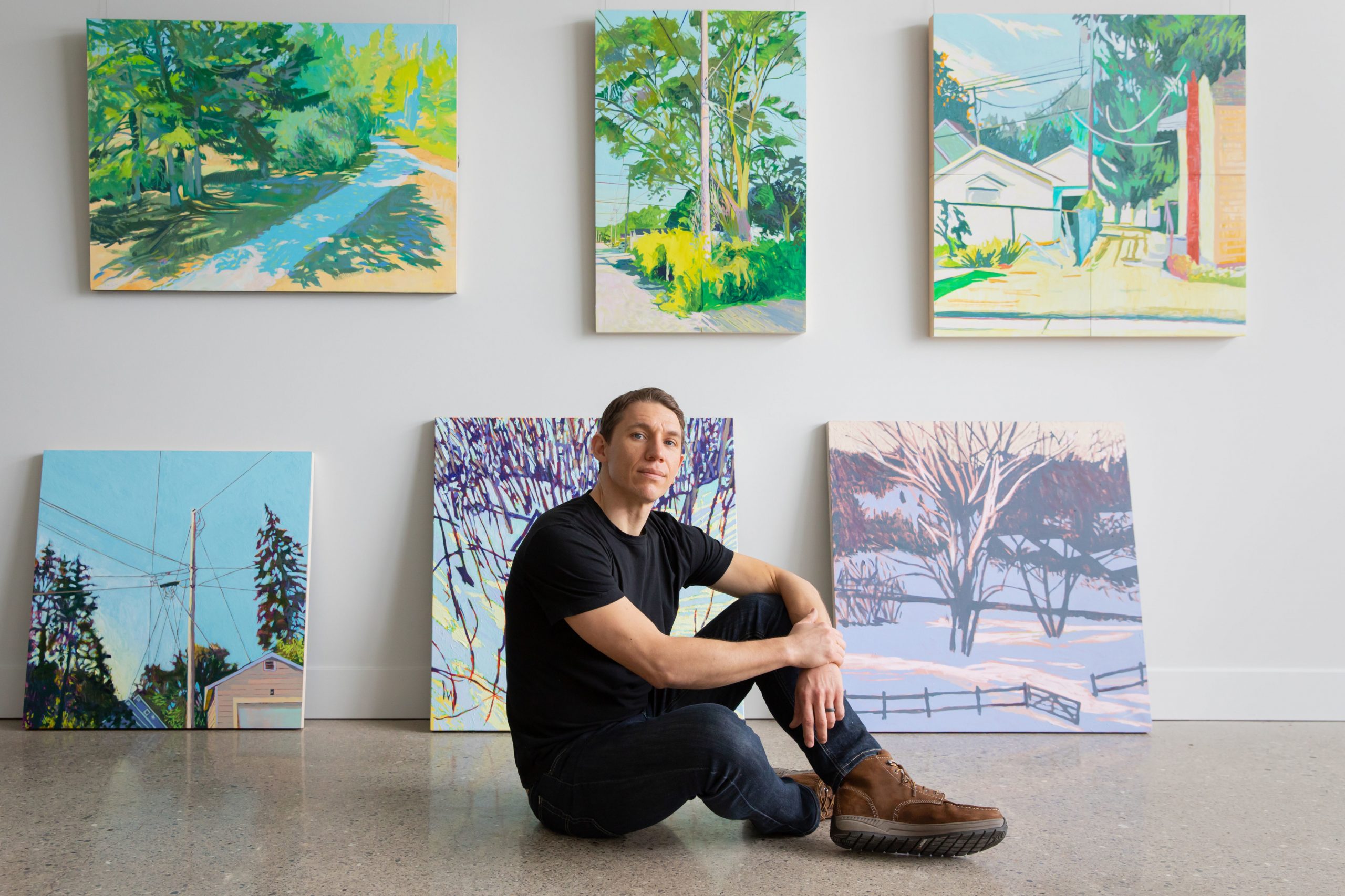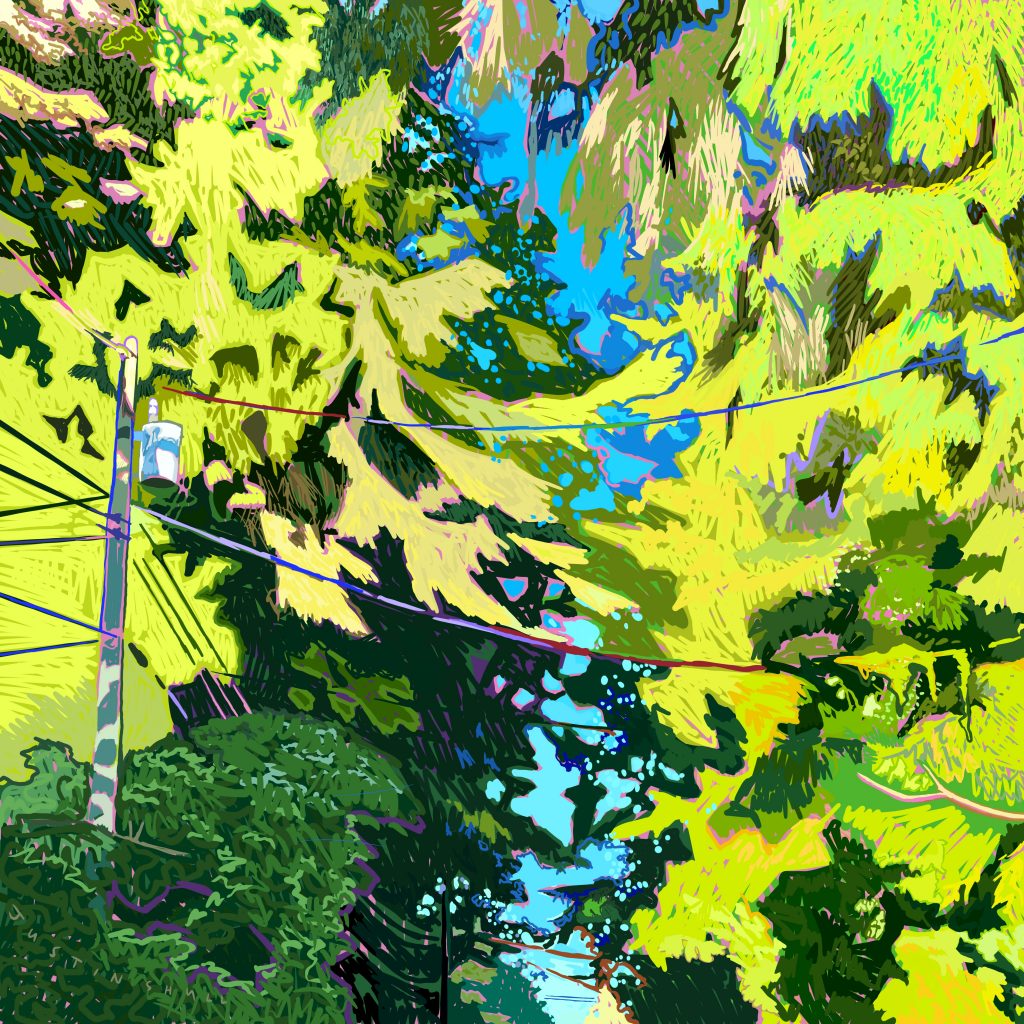
“There’s a difference between identifying as an artist, maintaining an art practice, and pursuing one’s art as a livelihood.”
Name
Justin Shull
Profession
Painter
Website
justinshull.com
Instagram
@justinshullstudio
Where are you from?
United States
Your style in 3 words?
Vibrant. Celebratory. Introspective.

Your weakness? Your strength?
I often want to accept people and things at face value. The world seldom operates at face value, and meaningful art, especially, requires one to consider multiple interrelated layers and inherent contradictions. The subject is often not the content, and I’m still learning how to differentiate the two in life.
What makes you different? …
My life experience has taken me from consulting on enterprise software for corporate banks in Manhattan to planting trees on tree farms in the Rockies, from leading teams in global video game development studios to teaching in university classrooms. I studied art in college, and then explored a lot of different kinds of art practices throughout and between these experiences. When I returned to painting several years ago, I did so with a renewed conviction about the possibilities and relevance of the medium, a conviction that only twenty years of diverse experience and self-reflection could have provided.
When did you decide to become an artist?
I knew painting was my passion when I was still in high school, and I switched to a Visual Arts degree in college after trying a few other majors first. There’s a difference between identifying as an artist, maintaining an art practice, and pursuing one’s art as a livelihood. I have identified as an artist and maintained an art practice over the last 20 years, but it’s only in the past several years that I have transitioned to my art being my livelihood.
Do you choose your art form, or does the form choose you?
The compulsion toward a particular art form comes initially from a deep unknown place in my experience and requires introspection to fully understand. We can rationalize an intentional move toward one art form or another, but the inherent drive to paint, for example, feels the same as attraction toward certain people or an affinity for certain foods.
What do you find most fascinating about the creative process?
The painting is an accumulation of human marks made upon a surface. And yet, in the process of creating, the painting reveals surprises, both about the particulars of itself and about relationships that extend into the sum of one’s artistic practice. In this way, the painting is an active participant and requires receptiveness and sensitivity to what it says.
A few words about your favourite creation?
One of my favorite paintings to-date is a panoramic canvas, painted loosely with bold color, whose symmetrical volcanic eruption silhouettes a volcanologist walking casually away from the eruption, head down, seemingly oblivious to the existential threat just behind them. This painting was inspired by the French volcanologists, Katia and Maurice Krafft, who pioneered the filming of volcanic eruptions. They brought a mysterious and sublime aspect of the universe to the public eye in the second half of the 20th century.

What surprised you most about your first art shows?
When the group of new paintings is hung in the gallery, there are conversations that happen between the artworks – that I know at some subconscious level are there, but only manifest when the work has the space and focus a show provides. The first few times this happened, I did not expect it.
Someone else’s work that inspired or inspires you?
I became enamored of Frank Stella’s oeuvre early in my studies. His movement from minimalism to maximalism throughout the arc of his career has always been an inspiration.
Who would you like to work with someday and why?
I would love to collaborate with the Danish video game studio Playdead someday. Their artistry is superb and the content of their games touches upon the human condition in ways I have rarely experienced in the medium.
A new project coming up or an idea you want to work on?
For several years I have depicted mostly uninhabited landscapes and streetscapes. I have recently welcomed the figure back into my work. I am excited about the extended opportunity for metaphor and implied narrative that the figure presents.
Finish the sentence „More important than my career is…“
I have a nine-year-old son and a ten-year-old daughter. My children are part of the next generation who will influence the future of the planet and civilization. Teaching them to be kind, generous, curious, and to push their comfort zone is paramount!
2022: Where are we going?
Without question, into 2023.
Do you think about time as an artist?
When I’m in front of a painting, engaged in its creation, there is very little thought of time. Ideas visit and depart, and specific decisions are made about brush and color and paint viscosity and sheen and placement, but they are not made watching the clock. When I’m not painting, I think about time as a limited resource, I think about time as a sometimes useful and sometimes limiting construct of our consciousness.
When the going gets tough…
I get on my bicycle and meditate in circles. I enjoy the rotation of gear rings and wheels, the transfer and translation of human energy into movement over the ground, and I reflect on the circle as a celestial object, as a container, and as a line that always returns to itself.

Put on your future vision glasses: What direction is our generation moving in, what will our world look like in 50 years?
We are pushing our biosphere and testing its limits. We are creating AI technology that will quickly outpace us in its ability to both ‘think’ and to ‘create’. We have figured out how to interfere with our genetic code in very targeted ways and to alter biological expression. It feels like our species is in an adolescent developmental stage testing its boundaries, coming to terms with newfound abilities, and where that takes us in 50 years is incredibly difficult to predict, but I suspect we will have to fundamentally revisit what it means to live a life of purpose within that time frame.
What would you do if you could change the World?
I would keep painting and I would keep parenting. I would continue to evaluate the potential impact with each painting I create, and I would continue to teach my children kindness, accountability, self-reliance, and generosity. If I could change the world instantly, I would want all children to have someone in their lives who would teach them these values.
What does freedom mean when it comes to art?
To have our needs met and to have the surplus energy to exercise creative expression is one form of freedom I often think about in relation to human potential.

If the universe is everything and it’s expanding, what is it expanding into?
Our brains do not generally work this way. One of the beautiful things about art is its ability to maintain contradictory and dual states simultaneously, such as the concept of everything expanding into itself.
Tell us about your future plans…
Make meaningful paintings. Celebrate life.
Your city’s favorite spots?
We have a beautiful paved path that goes around a lake in our town, and it’s my favorite place to ride my bike and think.
Last but not least: what is your favorite Song?
Joni Mitchell’s Woodstock sits at the top of the list. The song represents such an important cultural moment. The sadness she experienced watching all of her musician friends attend when she could not combined with the youthful optimism that the event embodied, combined for a powerful delivery.
One last statement please: „Wood or stone, gold or art?“
Wooden gilded sculptures.
Your #…?
99.9










